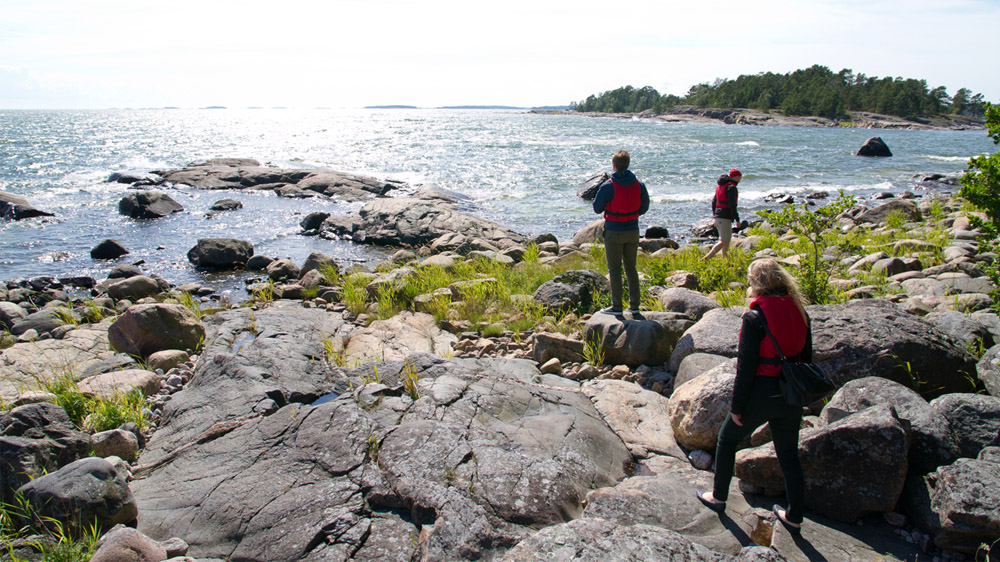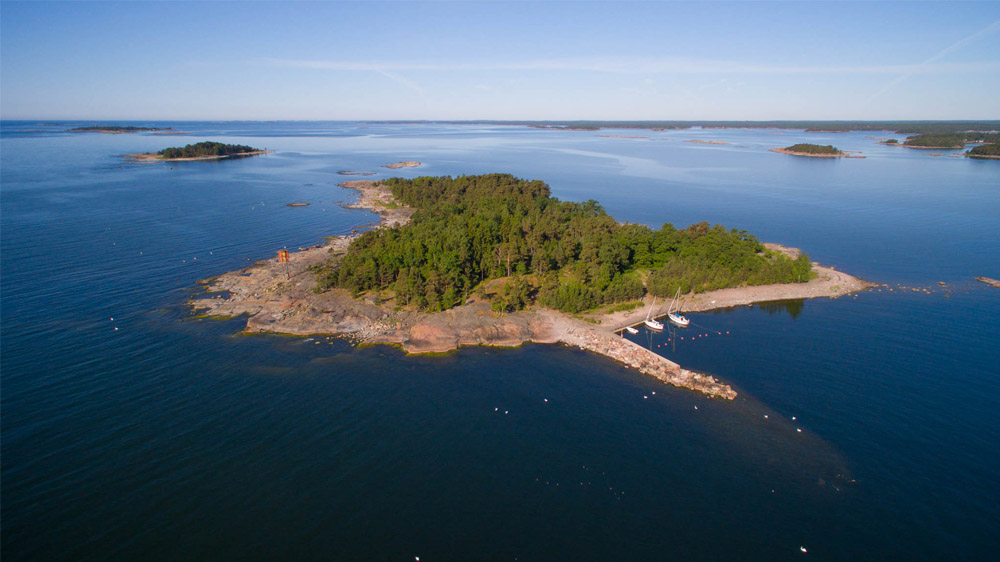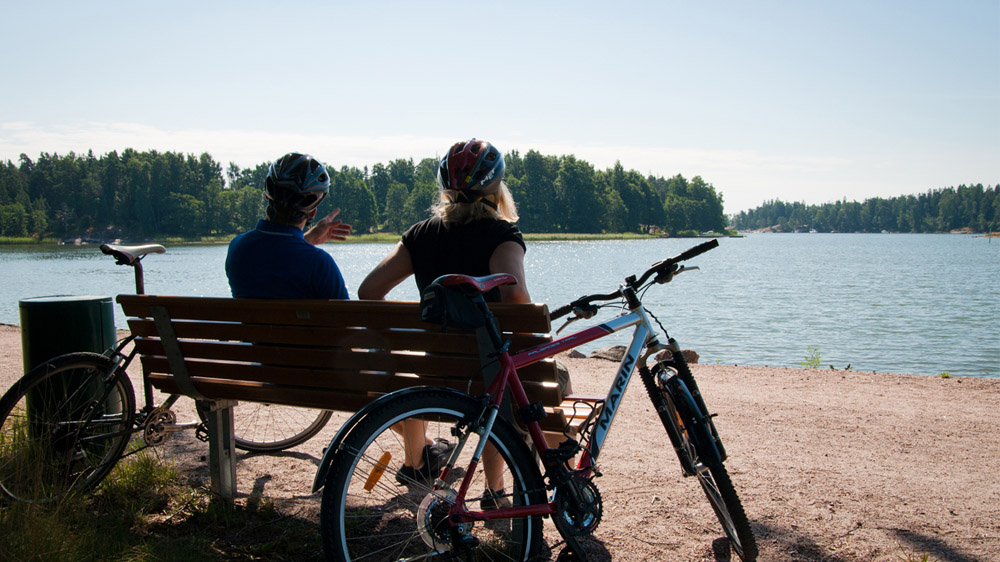

Iso Vasikkasaari (24 ha)
The island has a diverse and luxuriant ecosystem. There is a regular boat service to the jetty. With the exception of its northeastern corner, Iso Vasikkasaari is an outdoor recreation area. The private enclosure features perhaps Espoo’s most exotic building, a small replica of the Temple of Poseidon. Delightful seashore meadows fringe the island’s shores, those in the southern parts being the most diverse. There is a one-time fisherman’s dwelling, now serving as a kiosk. Overnight camping is not permitted. The island features a summer restaurant called Gula Villan.
Services
- Beach-volley
- Café and restaurant in summer
- Cooking shelter with firewood (also in winter), WC (including facility for disabled)
- Children’s playground equipment
- Fresh water in summer
- Lawn areas
- Beach
- Observation tower
- Mooring buoys and rings
- Pathway network (partly also for disabled)
- Archipelago boat jetty + regular boat service vessels
- Island security
Bylandet (9,7 ha)
is located off Porkkala on the Kirkkonummi side. It belongs to the picturesque Stora Mickelskären island group. Bylandet is ideal as a base for boaters and fishermen/-
women. Overnight camping is permitted. The tower on the island is reserved for the
defence forces.
Services
- Cooking shelters + firewood, WC
- Campfire facilities
- Mooring buoys and rings
Gåsgrund (9,8 ha)
is a popular place for camping. Its terrain
is flat and varies from outcrops of smooth
rock to fertile meadows and dry heath forest.
There are few trees. Sandy beaches
suitable for children can be found along
the island’s northern shore.
- Cooking shelters + firewood, WC
- Mooring buoys and rings
- Archipelago boat jetty + regular boat service vessels
- Security service

Kaparen (4 ha)
The most typical features of Kaparen are Scots pine groves growing on bedrock,
smooth rock surfaces, small pools, and seashore meadows. The location is suitable
for visitors spending the night onboard their own boats. Camping is prohibited.
- Cooking shelters + firewood, WC
- Mooring rings
Knapperskär (4,9 ha)
is a rather low-lying island of smooth bedrock where camping is permitted
- Cooking shelter, firewood and WC
Korkeasaari (6,5 ha)
Korkeasaari is a forested outer island lying east of Tvijälpi. Its shore is fringed by a narrow
seashore meadow. Korkeasaari has no services at all and camping is prohibited.
- Campfire facility
Rövargrundet (0,8 ha)
Rövargrundet is a rocky islet supporting a few trees. There is room for a few tents only.
- Campfire facility and WC
- Camping allowed
Rövaren (9,1 ha)
Rövaren, dominated by rocky and screestrewn shores, is a popular camping spot.
Many typical seashore plants can be found in the shore meadows on the south-western
side. Its tree stands are principally Scots pine on bedrock, with bilberry (blueberry)
and lingonberry heaths. Camping is allowed.
- Cooking shelters + firewood, WC
- Campfire facilities
- Mooring rings
- Archipelago boat jetty + regular boat service vessels
- Camping allowed
Stora Herrö (44,3 ha)
By and large, Stora Herrö’s shores are rocky. However, shallow, sandy little bays with shore meadows can be found on its eastern side. Although Scots pine over rock tends to predominate on Stora Herrö, spruces also thrive in depressions in the bedrock and along the shores. There is also a smallish sedge mire at Söderviken in the island’s
southern part. Despite some of Stora Herrö’s shores having acquired summer houses, most of its northern and eastern shores are open to all as outdoor recreation areas.
- Bookable sauna for groups and organisations
- Cooking shelters + firewood, WC
- Campfire facilities
- Mooring rings
- Archipelago boat jetty + regular boat service
- Observation tower
- 1 Camping permitted
Torra Lövö (3,9 ha)
Torra Lövö is an outer islet with both solid rock and jumbles of boulders round
its shores. Seashore meadows are found among the polished bedrock.
- Jetty, cooking shelter, but no well
- WC
- Camping permitted
Tvijälp (13,4 ha)
Located just off the Westend, the public recreation island of Tvijälp is wooded in
its northern part but dominated by bedrock in its southern half. The centre of the island is low-lying. Tvijälp displays some splendid seashore meadows. The island has a broad variety of habitats and in its own way it tells us much about the life of bygone fisher folk among the Espoo islands. Camping is not permitted, nor are there any services on the island.



